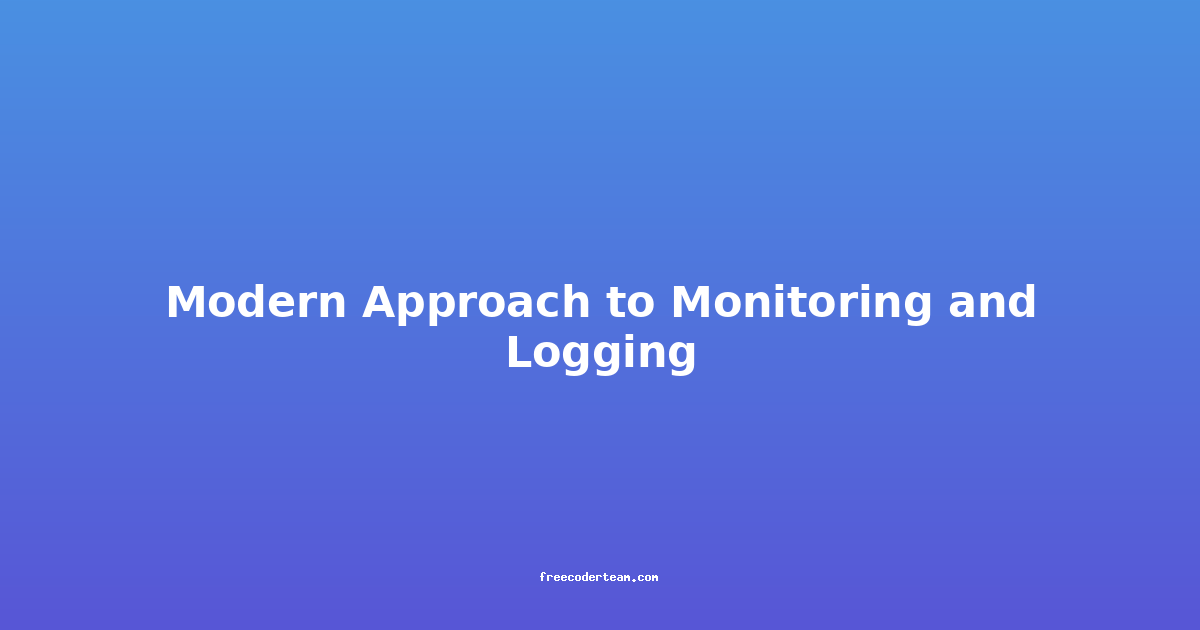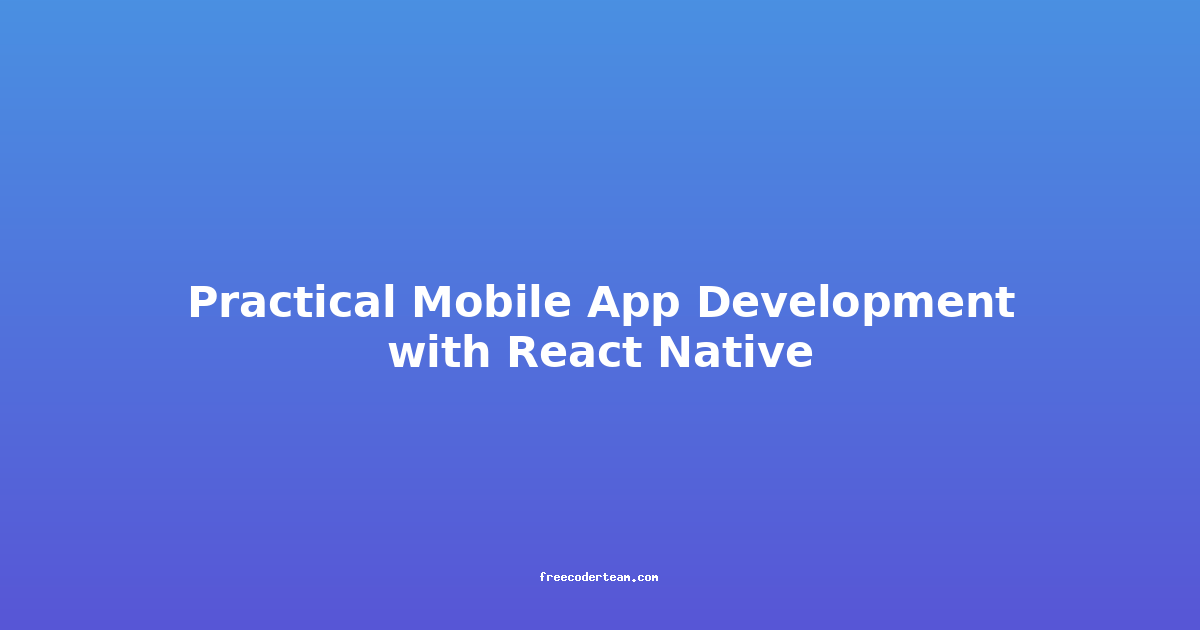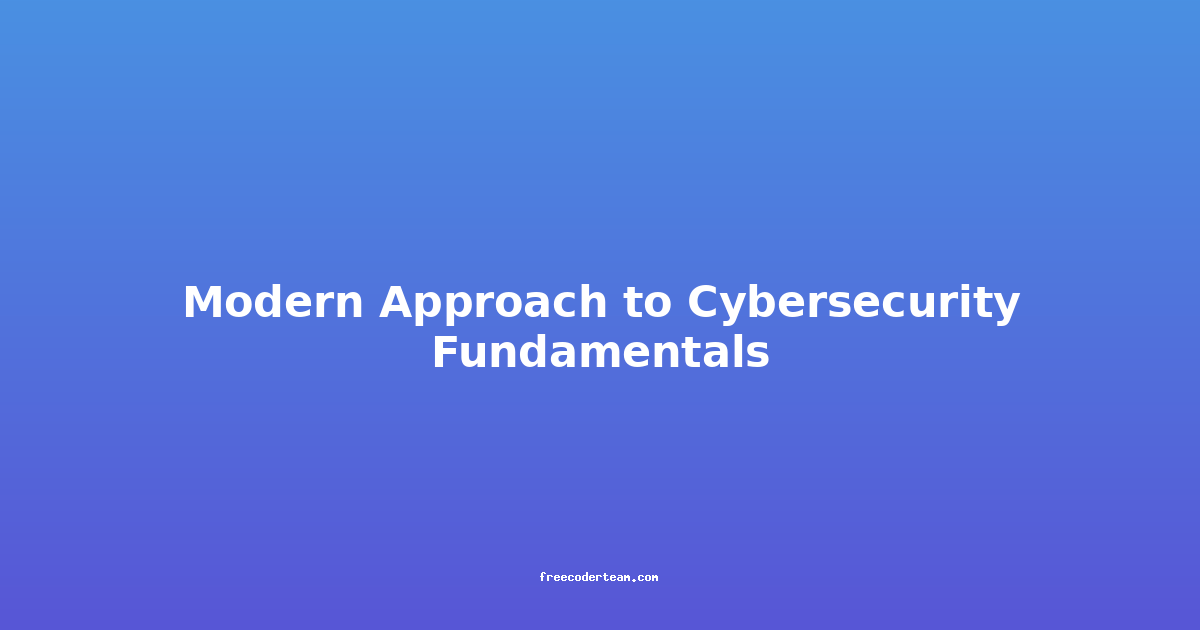Modern Approach to Monitoring and Logging
In today's fast-paced digital landscape, where applications are deployed in complex microservice architectures and cloud environments, the importance of effective monitoring and logging cannot be overstated. Monitoring and logging are the foundation of observability, enabling teams to understand the health, performance, and behavior of their systems in real-time. This blog post will explore the modern approach to monitoring and logging, including best practices, practical examples, and actionable insights to help you build a robust observability pipeline.
Table of Contents
- Why Monitoring and Logging Matter
- Key Components of Modern Monitoring and Logging
- Metrics
- Logs
- Traces
- Best Practices for Effective Monitoring and Logging
- Centralized Logging
- Instrumentation
- Alerting and Notifications
- Correlation and Context
- Practical Examples
- Monitoring Microservices with Prometheus and Grafana
- Centralized Logging with Elasticsearch, Logstash, and Kibana (ELK Stack)
- Actionable Insights
- Conclusion
Why Monitoring and Logging Matter
Monitoring and logging are essential for several reasons:
- Troubleshooting and Debugging: When issues arise, logs provide detailed insights into what went wrong, helping developers identify and resolve problems quickly.
- Performance Optimization: Metrics help monitor system performance, allowing teams to identify bottlenecks and optimize resources.
- Proactive Detection: Real-time monitoring enables teams to catch issues before they impact users, reducing downtime and improving reliability.
- Compliance and Auditing: Logs can be used to meet regulatory requirements and provide audit trails for compliance purposes.
In the modern era, with the rise of cloud-native applications and distributed systems, traditional monitoring and logging methods are no longer sufficient. A modern approach is required to handle the complexity and scale of contemporary systems.
Key Components of Modern Monitoring and Logging
Modern monitoring and logging are often referred to as observability. Observability is the ability to understand the internal state of a system through its external outputs. The three key components of observability are:
1. Metrics
Metrics are quantitative data points that provide insights into the performance and health of a system. They are typically numeric and can be used to track trends over time. Common metrics include:
- CPU and Memory Usage: Monitor resource consumption to detect bottlenecks.
- Request Latency: Measure the time it takes for a system to respond to a request.
- Error Rates: Track the number of errors to identify problematic services.
2. Logs
Logs are time-stamped records of events that occur within a system. They provide detailed information about what happened, when it happened, and under what conditions. Logs are crucial for troubleshooting and debugging.
3. Traces
Traces are used to track the flow of a request as it moves through a distributed system. They help understand how different services interact and identify latency issues in complex architectures.
Best Practices for Effective Monitoring and Logging
1. Centralized Logging
Centralized logging involves collecting logs from all parts of your system into a single location. This approach simplifies log management and analysis. Tools like the ELK Stack (Elasticsearch, Logstash, Kibana) or other log aggregators (e.g., Splunk, Graylog) are commonly used for centralized logging.
Example: ELK Stack
- Logstash: Collects logs from various sources.
- Elasticsearch: Stores and indexes logs for efficient querying.
- Kibana: Provides a visual interface for analyzing and visualizing logs.
# Example of Logstash configuration
input {
file {
path => "/var/log/*.log"
start_position => "beginning"
}
}
output {
elasticsearch {
hosts => ["localhost:9200"]
index => "logstash-%{+YYYY.MM.dd}"
}
}
2. Instrumentation
Instrumentation involves embedding monitoring and logging capabilities directly into your application code. This ensures that metrics and logs are collected consistently across all parts of your system.
Example: Using OpenTelemetry for Instrumentation
OpenTelemetry is an open-source observability framework that helps collect traces, metrics, and logs. It provides SDKs for various programming languages.
from opentelemetry import trace
from opentelemetry.sdk.trace import TracerProvider
from opentelemetry.sdk.trace.export import (
ConsoleSpanExporter,
SimpleSpanProcessor,
)
# Set up the TracerProvider
trace.set_tracer_provider(TracerProvider())
# Export spans to the console
trace.get_tracer_provider().add_span_processor(
SimpleSpanProcessor(ConsoleSpanExporter())
)
# Create a tracer and start a span
tracer = trace.get_tracer(__name__)
with tracer.start_as_current_span("example span"):
print("Hello, World!")
3. Alerting and Notifications
Alerting systems notify teams when metrics or logs indicate a problem. Setting up alerts for critical metrics (e.g., high error rates, low disk space) ensures that issues are addressed promptly.
Example: Prometheus Alerts
Prometheus is a popular open-source monitoring system that can be used to define alerts.
# Alert for high CPU usage
groups:
- name: cpu_alerts
rules:
- alert: HighCPUUsage
expr: process_cpu_seconds_total > 0.8
for: 5m
labels:
severity: critical
annotations:
summary: "High CPU usage detected"
description: "CPU usage has exceeded 80% for more than 5 minutes."
4. Correlation and Context
In distributed systems, logs and metrics from different services need to be correlated to understand the full context of an issue. Techniques like distributed tracing (e.g., using OpenTelemetry or Jaeger) help tie together logs and metrics across services.
Example: Distributed Tracing with Jaeger
Jaeger is an open-source distributed tracing system. It helps correlate logs and metrics by propagating trace IDs across services.
# Start Jaeger
docker run -d --name jaeger \
-e COLLECTOR_ZIPKIN_HTTP_PORT=9411 \
-p 5775:5775/udp \
-p 6831:6831/udp \
-p 6832:6832/udp \
-p 5778:5778 \
-p 16686:16686 \
-p 14268:14268 \
-p 9411:9411 \
jaegertracing/all-in-one:1.36
Practical Examples
1. Monitoring Microservices with Prometheus and Grafana
Prometheus is a powerful open-source monitoring system, and Grafana is a visualization tool that works seamlessly with it. Together, they provide a comprehensive solution for monitoring microservices.
Steps:
- Install Prometheus: Collect metrics from your services.
- Expose Metrics: Ensure your microservices expose Prometheus-compatible metrics.
- Visualize Metrics: Use Grafana to create dashboards for real-time monitoring.
# Example Prometheus configuration
scrape_configs:
- job_name: 'microservices'
static_configs:
- targets: ['service1:8080', 'service2:8080']
2. Centralized Logging with Elasticsearch, Logstash, and Kibana (ELK Stack)
The ELK Stack is a popular choice for centralized logging. It provides a robust pipeline for collecting, processing, and analyzing logs.
Steps:
- Collect Logs: Use Logstash to gather logs from various sources.
- Index Logs: Store logs in Elasticsearch for efficient querying.
- Analyze and Visualize: Use Kibana to explore logs and create dashboards.
Actionable Insights
-
Start with a Minimalist Approach: Begin by monitoring critical metrics and logging essential events. Gradually expand your observability pipeline as needed.
-
Standardize Your Logging Format: Use a consistent logging format (e.g., JSON) across all services to simplify log analysis.
-
Leverage Open Source Tools: Use open-source tools like Prometheus, Grafana, and OpenTelemetry to build a robust observability stack without incurring high costs.
-
Automate Alerting: Set up automated alerts for critical metrics to ensure issues are addressed promptly.
-
Regularly Review Logs and Metrics: Conduct regular reviews to identify patterns, detect anomalies, and optimize your system.
Conclusion
Monitoring and logging are vital for maintaining the health and performance of modern applications. By embracing a modern observability approach that includes metrics, logs, and traces, teams can gain deeper insights into their systems. Centralized logging, effective instrumentation, and automated alerting are essential best practices that empower developers and operations teams to proactively manage and optimize their systems.
Remember, observability is not a one-time setup but an ongoing process. Continuously refine your monitoring and logging strategies to adapt to the evolving needs of your applications and infrastructure.
By following the principles and practices outlined in this blog post, you can build a robust monitoring and logging pipeline that enhances the reliability, performance, and efficiency of your systems.




